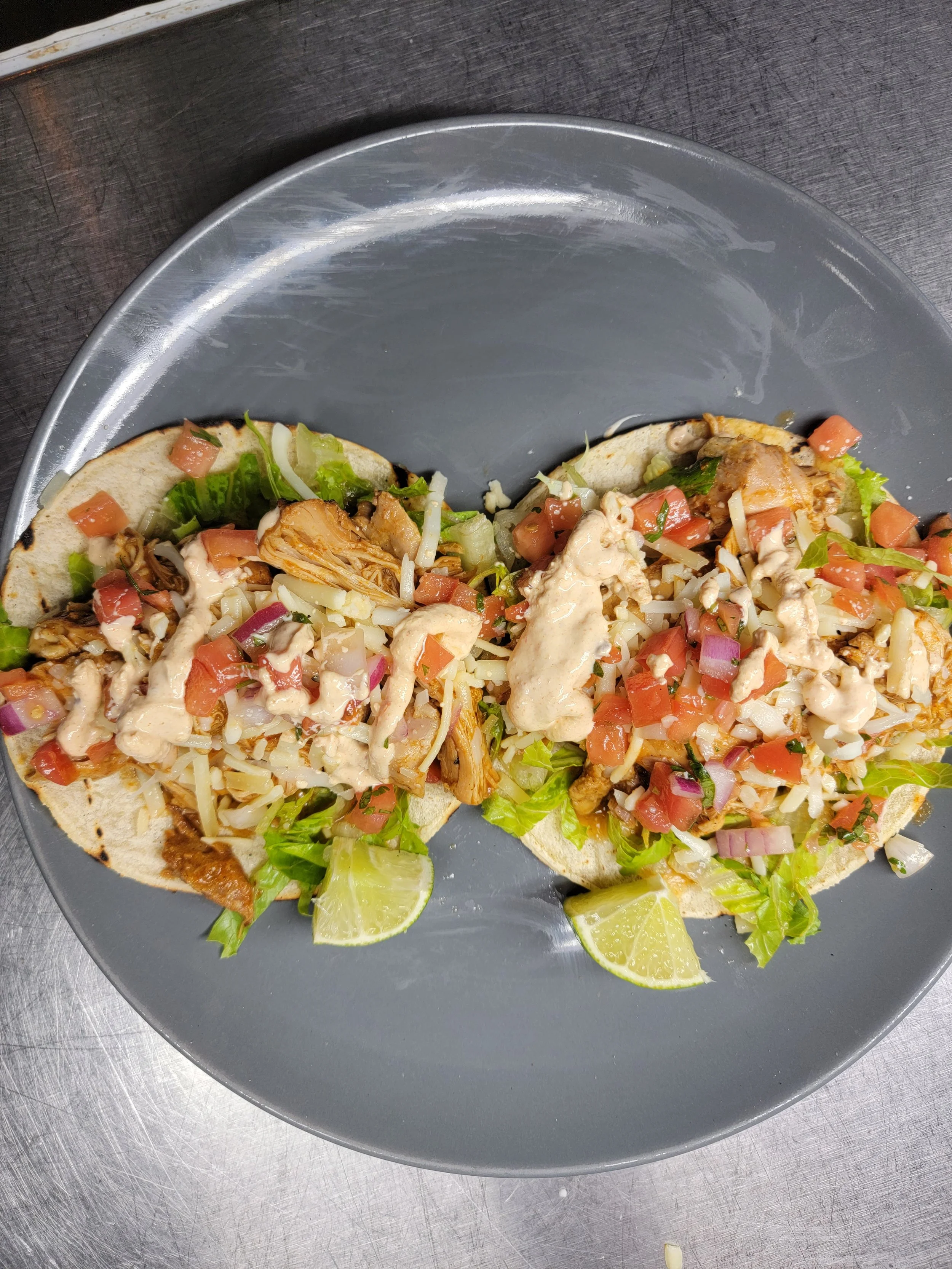How to cook chorizo
Introduction
Chorizo, a flavorful and versatile sausage, has become a staple ingredient in numerous cuisines around the world. As we embark on this culinary journey, it is essential to understand the fascinating history and origin of chorizo, as well as its significant role in various global gastronomic traditions.
The Origins of Chorizo: A Flavorful Journey Through Time
While chorizo's precise origins remain debatable, it is widely believed to have originated in the Iberian Peninsula, specifically Spain and Portugal. The word "chorizo" itself comes from the Latin word "salsicium," meaning sausage.
Dating back centuries, chorizo was born out of necessity - a way to preserve meat before modern refrigeration techniques existed. In its earliest form, chorizo was simply seasoned ground meat stuffed into natural casings made from animal intestines.
Over time, regional variations emerged with the addition of spices and seasonings that reflected local culinary traditions. Today, these variations are what make chorizo such an exciting ingredient to work with.
The Culinary Significance of Chorizo Around the Globe
Chorizo's popularity extends far beyond its birthplace in the Iberian Peninsula. This delectable sausage has found its way into an array of cuisines worldwide – each region adapting it to suit their distinctive palates and cooking methods. In Spain alone, chorizo plays an indispensable role in traditional dishes like paella and fabada Asturiana (a hearty bean stew).
In Mexican cuisine, chorizo takes on a spicier profile due to the inclusion of chili peppers and unique seasoning blends such as adobo sauce or achiote paste. Portuguese cuisine boasts diverse chorizos depending on their region – from smoky chouriço used in stews to the sweet and aromatic alheira found in northern Portugal.
Beyond the Iberian Peninsula, chorizo has infiltrated cuisines as diverse as Latin American, Filipino, and even certain Asian fusion dishes. Its distinct flavors, vibrant colors, and versatility have made it a beloved ingredient among passionate home cooks and celebrated chefs alike.
Understanding Chorizo
Different types of chorizo (Spanish, Mexican, Portuguese, etc.)
Chorizo is a highly versatile sausage that has gained popularity throughout various culinary traditions. While it originated in Spain, its unique flavors and textures have been adapted and refined by different cultures. Spanish chorizo is known for its smoky flavor and firm texture.
It is often made from coarsely chopped pork seasoned with paprika, garlic, and other spices. Mexican chorizo, on the other hand, tends to be more vibrant and spicy.
Made from ground pork mixed with vinegar or citrus juices, chili peppers, cumin, and herbs like oregano or cilantro – it adds a burst of bold flavors to any dish. Portuguese chorizo brings its own distinct characteristics by incorporating red wine into the mixture along with smoked paprika that imparts an intense smoky taste.
Variations in ingredients and flavors based on regional preferences
Along with different types of chorizo, there are also variations in ingredients and flavors based on regional preferences within each country. For example, Spanish chorizos from the regions of La Rioja or León may include additional spices such as thyme or oregano to create a unique blend of flavors. In Mexico, some regions add cinnamon or cloves to infuse their chorizos with an aromatic twist.
Portuguese versions may use regional wines like Port wine or specific seasonings like bay leaves for added complexity. The variation in ingredients not only adds diversity but also allows for customization in dishes where chorizo is used as an ingredient.
Depending on personal taste preferences and recipe requirements, one can choose between sweet or spicy variations of chorizo – each offering a distinct profile that can elevate the overall dish. Understanding the different types of chorizo available in various cuisines allows home cooks to experiment with new flavors and adapt recipes to their own liking.
Whether you prefer the robust and smoky Spanish chorizo, the fiery kick of Mexican chorizo, or the refined complexity of Portuguese chorizo – each type adds its own unique touch to a wide range of culinary creations. Exploring these variations ensures a delightful gastronomic journey that celebrates the rich cultural heritage associated with this beloved sausage.
Selecting the Perfect Chorizo
Factors to consider when buying chorizo (fresh or cured)
When it comes to selecting the perfect chorizo for your culinary endeavors, there are a few key factors to keep in mind. Firstly, determine whether you prefer fresh or cured chorizo.
Fresh chorizo is uncooked and typically needs to be cooked before consuming, while cured chorizo is ready-to-eat as it has undergone a preservation process. The choice depends on your recipe and personal taste preferences.
Next, consider the ingredients used in the chorizo. Look for high-quality meats such as pork or beef that have been properly seasoned with a blend of spices like paprika, garlic, and chili powder.
Avoid chorizos that contain excessive fillers or artificial additives, as they can affect both taste and texture. Opt for varieties that use natural casings rather than synthetic ones, as natural casings contribute to a better mouthfeel.
Identifying quality chorizo through appearance, texture, and aroma
To ensure you're purchasing top-notch chorizo, pay attention to its appearance. The color should be vibrant and consistent throughout – rich red hues are an excellent indicator of well-seasoned meat.
Avoid any signs of discoloration or dullness as they may indicate spoilage. Texture is another essential aspect to consider when selecting quality chorizo.
A good-quality sausage will have a balance of firmness and tenderness without being overly tough or mushy. Gently press the sausage with your fingers; it should feel slightly yielding but still hold its shape.
Don't underestimate the power of aroma when choosing your chorizo. High-quality sausages will emit a tantalizing scent that combines the smokiness of paprika with savory notes from garlic and other spices used in its preparation.
If possible, ask for a sample slice or smell the chorizo through its packaging to get a whiff of its enticing aroma. Trust your senses and choose chorizo that promises a delightful sensory experience.
Preparing Chorizo for Cooking
Removing casing or skin from cured chorizo
When working with cured chorizo, the first step is to remove the casing or skin. This protective layer is typically made of natural or synthetic materials and can hinder the cooking process if left intact.
To remove it, start by placing the chorizo on a cutting board. Take a sharp knife and make a shallow vertical incision along the length of the sausage.
Gently peel back and discard the casing while being careful not to damage or break apart the chorizo itself. The exposed chorizo is now ready for further preparation.
Slicing fresh or raw chorizo into desired shapes and sizes
Once you have selected fresh or raw chorizo, it's essential to slice it properly for cooking. Begin by placing the sausage on a clean cutting board and securing it with one hand while holding a sharp knife in your other hand.
For smaller bite-sized pieces, such as in tapas dishes, slice the chorizo into thin rounds about 1/4 inch thick. If you prefer larger chunks for stews or soups, cut thicker slices accordingly.
Remember to exercise caution when slicing as fresh chorizo can be quite soft and pliable compared to its cured counterpart. A good technique is to use long, smooth strokes while applying gentle pressure with your knife blade against the cutting board, ensuring controlled and even slices every time.
To accommodate different culinary preparations, you may also want to consider variations in shape rather than solely sticking to round slices. For example, cutting fresh chorizo into diagonal strips creates more surface area for caramelization when pan-frying.
Additionally, experimenting with different sizes can add visual appeal and texture diversity to your dish. Preparing chorizo involves removing the casing from cured sausages before cooking them further.
When working with fresh or raw chorizo, slicing it into the desired shapes and sizes is crucial. Taking care to remove the casing properly and slice with precision will ensure the best cooking experience and optimal flavor in your chorizo-based dishes.
Pan-frying: Achieving a Crispy Exterior while Retaining Juiciness Inside
One of the most popular methods for cooking chorizo is pan-frying, which results in a deliciously crispy exterior while ensuring the meat remains juicy and succulent on the inside. To achieve this perfect balance of textures, it is crucial to choose the right pan and regulate heat levels appropriately. For pan-frying chorizo, opt for a heavy-bottomed skillet or frying pan that distributes heat evenly.
This ensures that the sausage cooks uniformly without any hot spots that could lead to uneven browning or burning. A cast-iron skillet works exceptionally well as it retains and distributes heat effectively.
To begin, place the chorizo in an unheated skillet over medium-low heat. This allows the fat to render slowly, releasing its flavors and oils.
As the sausage starts to sizzle gently, increase the heat slightly to medium, allowing it to cook through evenly while achieving a desirable caramelization on the outside. Be careful not to crank up the heat too high or cook too quickly, as this can result in burnt edges while leaving the interior undercooked.
Adding Complementary Ingredients like Onions, Garlic, or Bell Peppers
To elevate your pan-fried chorizo dish further, consider adding complementary ingredients like onions, garlic, or bell peppers. These additions not only enhance flavor but also provide textural contrast and visual appeal. Start by sautéing thinly sliced onions until they become translucent and slightly caramelized in some spots.
Then add minced garlic cloves and cook for another minute until fragrant but not browned; otherwise, they may turn bitter. If desired, include colorful bell peppers cut into strips or cubes for added sweetness and crunchiness.
Sauté them alongside the onions and garlic until they become tender-crisp, ensuring they retain their vibrant colors. The combination of chorizo with these aromatic vegetables creates a symphony of flavors that will surely delight your taste buds.
Grilling: Enhancing Smoky Flavors with a Charred Finish
Another fantastic cooking method for chorizo is grilling, which imparts smoky flavors and adds a delightful charred finish to the sausages. When grilling chorizo, it is essential to preheat the grill properly and use indirect heat for thicker sausages to prevent burning the outside while ensuring thorough cooking. Start by preheating your grill to medium-high heat, allowing it to reach around 400°F (200°C).
This ensures that the chorizo cooks through without excessive charring or drying out. Clean and oil the grates before placing the sausages on them to prevent sticking.
If you have thick chorizo sausages, it's best to use indirect heat. This means placing them away from direct flames or high heat sources on your grill.
By doing so, you allow them to cook more gradually and evenly without scorching their exteriors. Close the grill lid while cooking and periodically turn the sausages using tongs for even browning on all sides.
Simmering: Infusing Flavors into Stews, Soups, or Rice Dishes
Simmering chorizo in stews, soups, or rice dishes is an excellent way to infuse its rich flavors throughout an entire dish while adding depth and complexity. The key lies in selecting an appropriate liquid base that complements the overall flavors of your chosen recipe.
For instance, using chicken or vegetable broth as a liquid base provides a savory foundation for stews or soups. The chorizo simmers gently, releasing its flavors into the broth, which in turn imparts a robust taste to the entire dish.
Alternatively, you can utilize red or white wine for a more sophisticated flavor profile, adding layers of complexity to your meal. When simmering chorizo, consider the desired tenderness of the sausage.
For stews or soups where a softer texture is preferred, allow the chorizo to cook for longer periods on low heat. However, if you desire a firmer bite with a slightly crisper exterior, reduce the cooking time accordingly while maintaining enough liquid to prevent drying out.
Variations on Chorizo Dishes
Spanish-style Tapas:
Tapas, originating from Spain, are small plates of food that are perfect for sharing and enjoying with friends. Chorizo is a popular ingredient in Spanish tapas, adding a smoky and savory flavor to these delightful dishes. One classic tapa featuring chorizo is Patatas Bravas with Chorizo.
This dish combines crispy potatoes, spicy tomato sauce, and chunks of chorizo to create a mouthwatering combination of textures and flavors. To make Patatas Bravas with Chorizo, start by parboiling peeled potatoes until they are slightly tender.
Then, cut the potatoes into bite-sized cubes and fry them until they turn golden brown and crispy. In a separate pan, sauté slices of chorizo until they release their oils and become slightly caramelized.
Serve the crispy potatoes topped with the cooked chorizo and drizzle spicy tomato sauce over them for an added kick. The result is a tantalizing tapa that will leave your taste buds dancing with delight.
Conclusion
The art of cooking chorizo opens up a world of culinary possibilities. From sizzling pans to smoky grills or simmering stews, this versatile sausage can be transformed into an array of delicious dishes that satisfy both the stomach and the soul.
Whether you choose to explore traditional Spanish tapas or experiment with fusion cuisine incorporating chorizo's robust flavors, there is something magical about bringing this cherished ingredient into your kitchen. By following the methods outlined in this article – from selecting quality chorizo to mastering various cooking techniques – you can unlock endless culinary adventures with this beloved sausage.
So don your apron, sharpen your knives, and embrace the joy of cooking chorizo as you embark on a flavorful journey that celebrates culture, tradition, and the simple pleasure of a well-cooked meal. Bon appétit!




























































